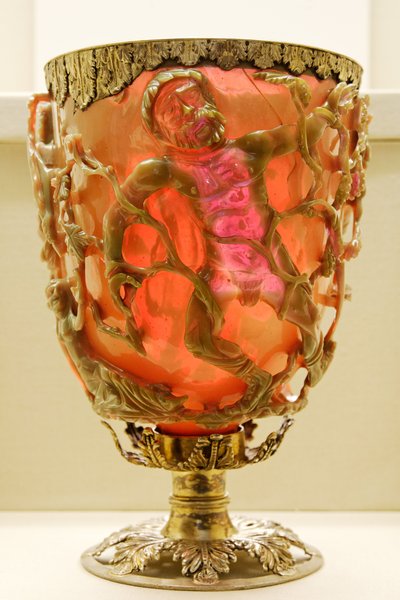Ancient Roman glass inspires nanoparticle research
Scientists at the University of Adelaide’s Institute for Photonics and Advanced Sensing (IPAS) have been inspired in their research by a 1700-year-old Roman glass cup.
The researchers are searching for new ways to exploit nanoparticles and their interactions with light. They are currently investigating how to best embed nanoparticles in glass - instilling the glass with the properties of the nanoparticles it contains.
The Lycurgus Cup, a 4th-century cup held by the British Museum in London, is made of glass which changes colour from red to green depending on whether light is shining through the cup or reflected off it. It gets this property from gold and silver nanoparticles embedded in the glass.

Associate Professor Heike Ebendorff-Heidepriem, Senior Research Fellow in the university’s School of Chemistry and Physics, said the cup “makes use of the exciting properties of nanoparticles for decorative effect”. She explained that the researchers “want to use the same principles to be able to use nanoparticles for all sorts of exciting advanced technologies”.
Assoc Prof Ebendorff-Heidepriem is leading a three-year ARC Discovery Project to investigate how best to embed nanoparticles; looking at the solubility of different types of nanoparticles in glass and how this changes with temperature and glass type, and how the nanoparticles are controlled and modified.
She noted that nanoparticles need to be held in some kind of solution and that glass is a frozen liquid. “By embedding the nanoparticles in the glass,” she said, “they are fixed in a matrix which we can exploit.”
Completely by chance, she said, the researchers found “the right glass and the right conditions to embed nanodiamond into glass, creating a single photon source in a fibre form. Now we need to find the right conditions for other nanoparticles and other glasses.”
Assoc Prof Ebendorff-Heidepriem said due to the special properties of nanoparticles and nanocrystals, “a process for successfully incorporating nanoparticles into glass will open the way for applications like ultralow-energy light sources, more efficient solar cells or advanced sensors that can see inside the living human brain”.
Microplastics found to alter the human gut microbiome
Microplastic-treated cultures showed a consistent and significant increase in acidity (lower pH...
Sustainable, self-repairing, antimicrobial polymers developed
From medicine to electronics and optics, new materials developed by scientists at Kaunas...
A better way to create conductive polymers
New research disproves the longstanding belief that to create conductive polymers, substances...



